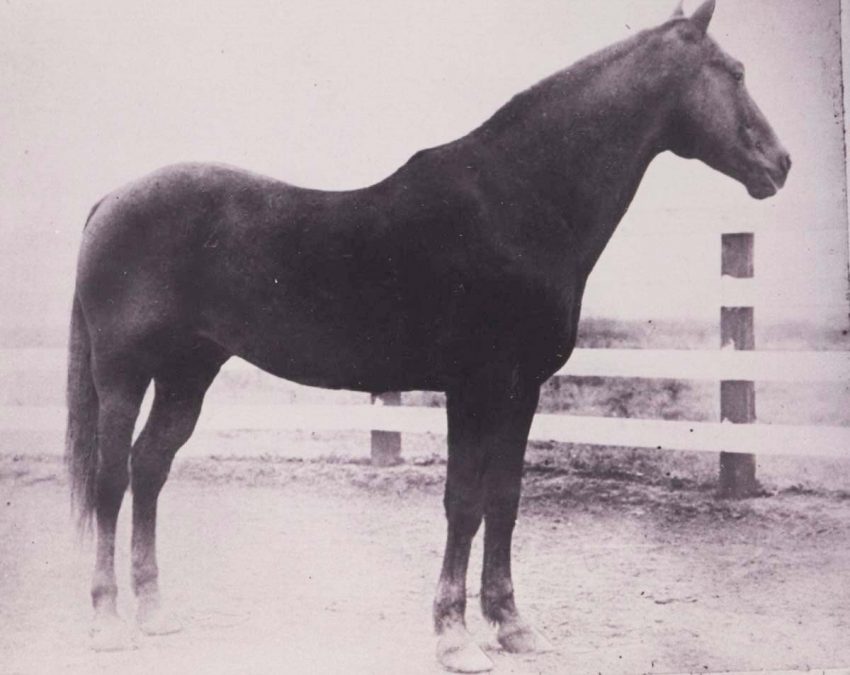It would be hard to come up with a more generic description for a horse than the old sorrel, but a talented stallion with that moniker made his mark as a foundation sire for the historic King Ranch.
Now, Old Sorrel can be found in the pedigrees of top reining horses more than a century after his birth.
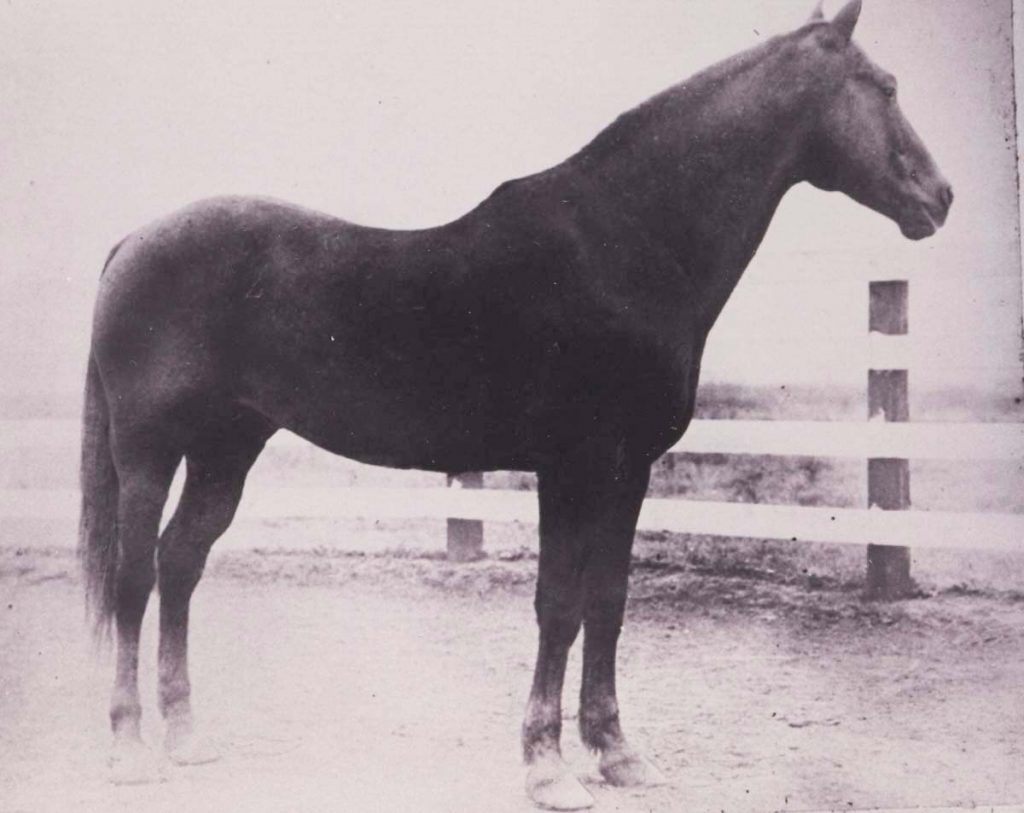
It all began in 1915 when Robert Kleberg of the King Ranch tasked his cousin, Caeser Kleberg, with purchasing a colt from George Clegg.
Caeser chose well, selecting a young colt from Hickory Bill out of a thoroughbred mare, shelling out $125 for the colt.
Soon, the King Ranch hands of Mexican descent labeled the colt as “el Alazan,” meaning the sorrel, and later as “al Alazan Viejo,” which is the old sorrel. The name stuck.
Old Sorrel was quick and a natural cow horse, maturing to 14.3 hands that matched his incredible balance, conformation, and temperament. Kleberg is quoted as saying, “(The stallion) was the best cow horse I ever rode.”
Kleberg’s goal was to produce a superior cow horse, so in 1921 began breeding mares to the stallion, most of which were of Thoroughbred breeding. The stallion stamped his foals with uniform conformation.
Kleberg planned to use controlled line-breeding to perpetuate the stallion’s qualities, and the best daughters were bred back to him. While the resulting foals were nice, they weren’t exceptional.
It was back to the drawing board to find the magic cross, and soon an Old Sorrel son, Solis (foaled in 1923), was bred to his half-sisters. The resulting foals were incredible, so the King Ranch continued with the breeding program.
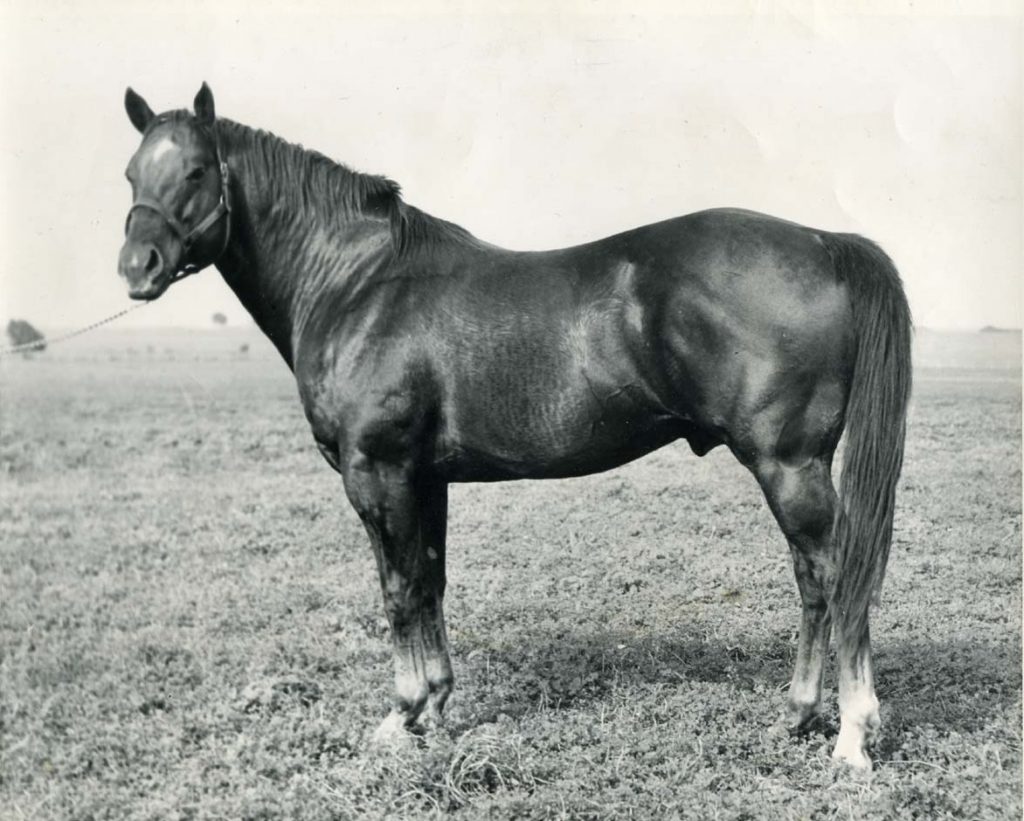
registered with AQHA.
One of the resulting foals was born in 1937. Sired by Solis and out of Panda (Old Sorrel x roan mare by Hickory Bill), Wimpy P-1 would be the first horse registered with the AQHA. The stallion received that designation when he won the stallion class at the 1941 Fort Worth Southwestern Exposition and Fat Stock Show.
The stallion returned to the King Ranch, where he sired 174 registered foals, including Bill Cody.
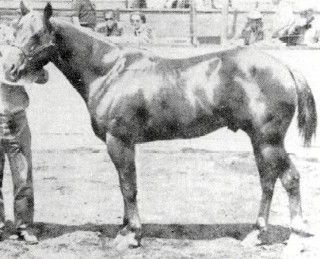
Bill Cody was foaled on the King Ranch in 1944. The flashy stallion was out of Pesetita, a mare by Old Sorrel.
The colt was sold in 1946 to Joe Hardin, who registered the colt with AQHA and named him in honor of famed Indian fighter and Wild West Showman “Wild Bill” Cody. Bill Cody won several stallion classes before being sent to Roy Savage to train for calf roping. Savage and the cold won their very first rodeo together in Ardmore, OK, and piled up several more wins.
Hardin eventually sold Bill Cody to Dr. Darrell Sprott, who continued with Cody’s halter career. When Sprott was killed in 1951, Bill Cody was sold to his final owner, Glen Casey. With Casey hauling him, 1952 proved to be Bill Cody’s most successful show year. He was shown at 11 shows, winning nine grands and two reserves.
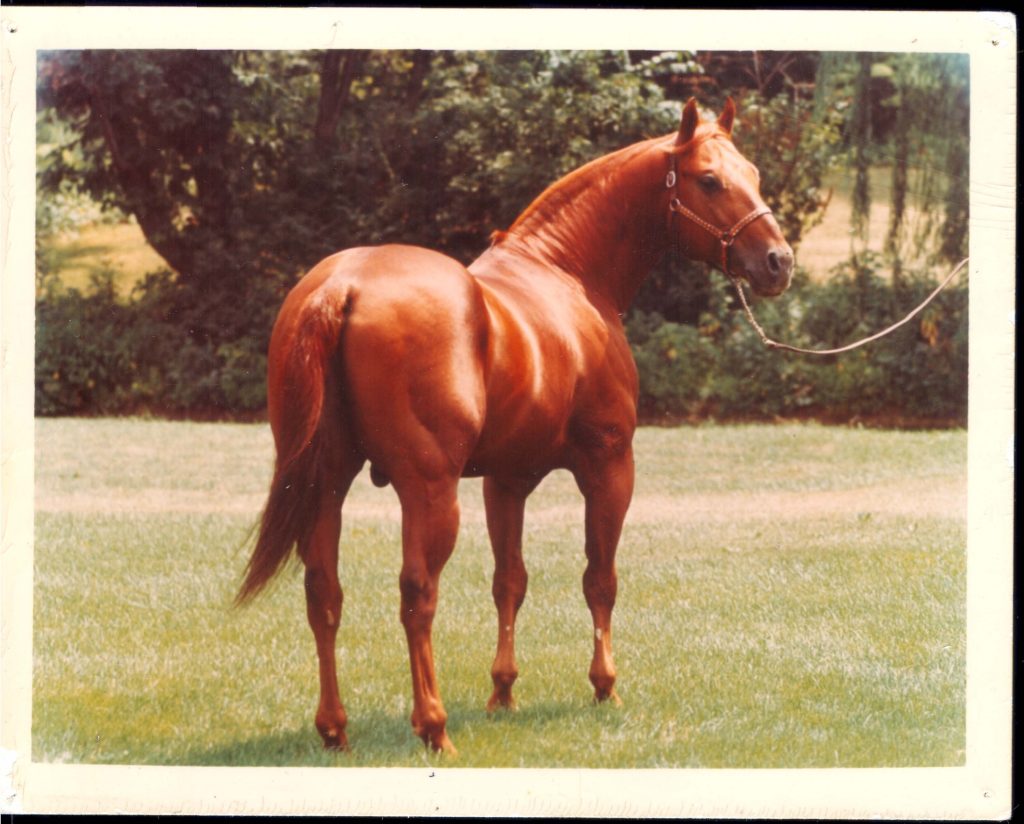
But it was while he was owned by Sprott that Bill Cody sired Joe Cody, a 1952 stallion out of Taboo, by King P-234.
While it would be logical to assume Joe Cody would follow in his legendary father’s halter horse footsteps, he was pointed to the performance arena, where he became one of the top cutting horses of the day.
Bred by Tom Cochran, the colt was purchased by Watt Hardin (the man who had purchased Bill Cody from the King Ranch) shortly after birth. A little more than a year later, Hardin sold him to Robert Roberts, who also owned the well-known Bill Cody son Lee Cody. Those two stallions were the first AQHA Champions sired by Bill Cody, and Joe Cody was the youngest one in the history of the Association.
Joe Cody’s official record in performance shows that he had nine wins, worth 46 AQHA points, in cutting, and one win, worth four points, in reining.
Joe Cody was eventually sold in 1961 to Virginia Harper of New York, and three years later was purchased by CT Fuller of Willow Brook Farms. Fuller and Bob Anthony knew the stallion needed to be breeding mares. He produced performances in many disciplines, including reining. Some of his top performers were Workman’s Joe, Paprika Cody, Big Bob Cody, Sapphire Cody, Tawny Cody, Red God, Pat’s Pal, High Proof, Guitar Mama, Cody Nine, Jody Cody Power, and 1979 NRHA Futurity Champion Cassandra Cody.
But it was Joe Cody’s last foal, Topsail Cody, who would make the biggest mark on the Western performance horse industry.
Topsail Cody was born in 1977 and was out of the Doc Bar mare Doc Bar Linda. The colt was bred by Fuller and was then sold to NRHA Hall of Famer Bob Loomis. Loomis had a long history with Joe Cody-bred horses, having had great success with both High Proof and Benito Paprika. In 1977, Loomis won the All-American Quarter Horse Congress Open Reining on High Proof and the NRHA Futurity with Benito Paprika.
While looking through the yearling pasture at Willow Brook Farms, a sorrel colt caught Loomis’ eye. Although most Joe Cody’s possessed the same look, this one had a more refined look.
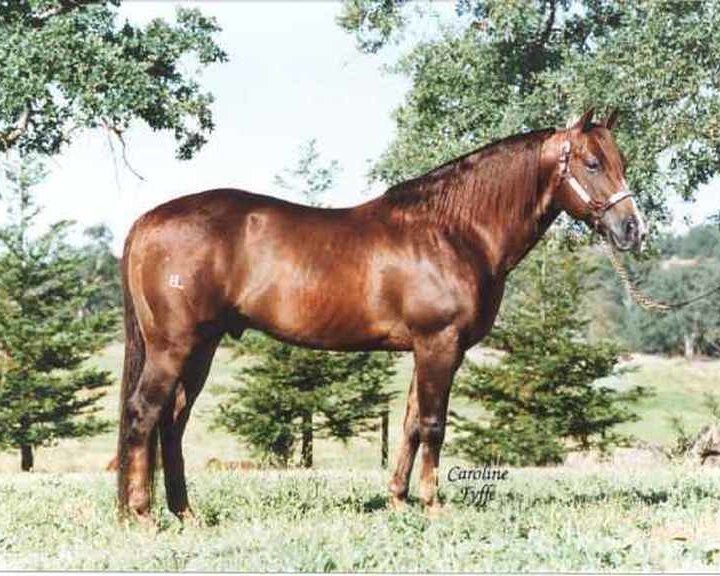
That colt was Topsail Cody, the resulting foal of the only daughter of Doc Bar to be bred to Joe Cody.
Loomis had purchased the colt for his brother, Ed. Bob trained the colt as a 2-year-old before Ed took him during a break. When he got the colt back in the spring of 1980, he realized he had made a mistake. He eventually purchased Topsail Cody back from his brother for four times what he’d originally paid.
Loomis showed Topsail Cody only two times before the 1980 NRHA Futurity, winning both AQHA shows.
At the NRHA Futurity, Loomis and Topsail Cody won the first go with a 230, tied for the lead of the second round with a 232.5. The pair kept getting better, and in the Finals, they marked a 234 to secure the title.
Next up for Loomis and Topsail Cody was the 1981 AQHA World Show, where they swept every round of the Junior Reining. Topsail Cody was undefeated.
Topsail Cody became an NRHA Million Dollar Sire in 1998. His top earner was Cee Blair Sailor, a stallion out of Miss Cee Blair – the mare who Topsail Cody tied for the win of the NRHA Futurity second round. Cee Blair Sailor, now in the NRHA Hall of Fame, was a three-time NRHA World Champion.
Topsail Cody also sired Topsails Rien Maker, an iconic cow horse with more than $371,000 in lifetime earnings. Topsails Rien Maker won three World’s Greatest Horseman championships and is the winningest horse in the history of that event.
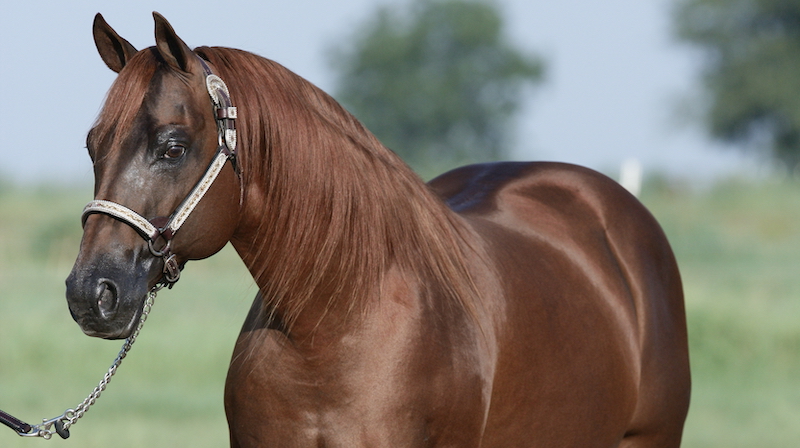
However, the foal that has impacted the reining industry the most is undoubtedly Topsail Whiz.
Foaled in 1987 and bred by Tom and Susan McBeath, Topsail Whiz, out of Jeanie Whiz Bar, was picked by Loomis to serve as Topsail Cody’s replacement. With that in mind, Loomis sold Topsail Cody to his friend Dick Randall.
As with his sire, Topsail Whiz almost got away from Loomis. He sold the colt to some of his customers as a yearling and then purchased him back as a three-year-old. “It took some negotiating, but I bought him back. This time it cost me five times what I’d sold him for, so I can’t say I’d gotten any smarter,” Loomis said.
Loomis campaigned Topsail Whiz on a very limited basis. The pair finished third at the 1990 NRHA Futurity, then won the 1991 Lazy E Classic in the Open, plus the championship at the All American Quarter Horse Congress in the Junior Reining and Open Reining.
The stallion’s most obvious success, however, came in the breeding shed. Producing many talented offspring, he has sired many champions, including seven NRHA Open Futurity champions and four NRHA Open Derby champions. His offspring also include Million Dollar Sires Conquistador Whiz, West Coast Whiz, Whizard Jac, Whiz N Tag Chex, Walla Walla Whiz, and Whizkey N Diamonds.
His most notable offspring include:
- The Great Whiz (out of Pines BH): NRHA LTE over $256,470
- Easy Otie Whiz (out of Miss Poco Easy): NRHA LTE over $233,610
- Whizkey N Diamonds (out of Princess In Diamonds): NRHA LTE over $216,335
- Dun It For Whizkey (out of Dun It For Chex): NRHA LTE over $214,803
- Smoking Whiz (out of Glendas A Smokingun): NRHA LTE over $208,838
References:
- Legends Volume 5
- AQHA.com
- Wikipedia.com
- ReinerSuite.NRHA.com
- NRHA.com

